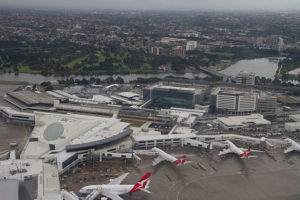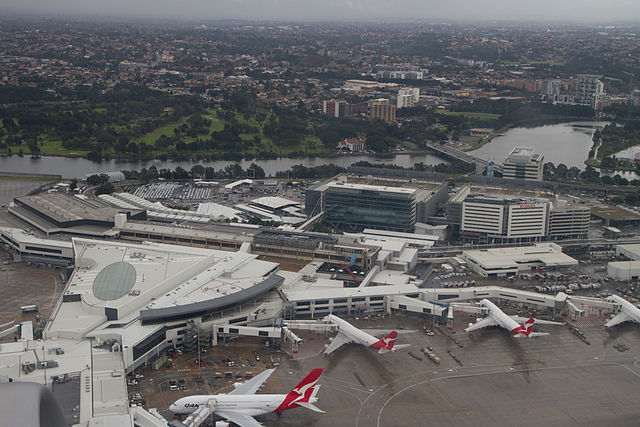 The Stifel Logistics Confidence Index for October remained below the neutral mark at 49.4, but once more noted a slight improvement against the previous month, according to a new report by Transport Intelligence (Ti).
The Stifel Logistics Confidence Index for October remained below the neutral mark at 49.4, but once more noted a slight improvement against the previous month, according to a new report by Transport Intelligence (Ti).
In a sign that the bankruptcy of Hanjin Shipping has had little overall effect upon the overcapacity issue and the confidence levels of the container shipping industry, the October Sea Freight Confidence Index remained unchanged from September at 49.0 points, said Ti.
This tallies with industry expectations, Ti added: “Power abhors a vacuum, and Alphaliner has reported that rival carriers have been quick to fill the gap in services Hanjin Shipping left behind. Nine extra sailings were added in September, according to the consultancy, with another six scheduled for October.”
Nonetheless, even the biggest carriers are feeling the pressure, said the report. In a media interview at the end of September, A.P. Moller-Maersk stated that the company “is done with ordering new steel” in the face of the systemic overcapacity issue.
With regards to air freight, the most recent cargo statistics from the International Air Transport Association (IATA) show that volumes, as measured in FTKs, increased by 3.9% in August.
This has caused some in the industry to see positive developments in the current market as continuing into October. The Air Freight Logistics Confidence Index saw a month-on-month gain of 0.6 points to 49.9, driven by a 1.6 point rise in the Present Index. However, the report said elation could be premature, noting how IATA has stated: “The underlying market conditions make it difficult to have long-term optimism.”
For air freight the October Air Freight Confidence Index gained 0.6 points over the results for September to reach a total of 49.9 points, and also marked a year-on-year improvement of 0.7 points when compared to October 2015. Nonetheless, the index was 6.6 points below the total recorded for October 2014.
The Present Index results for air freight were the chief driver behind the monthly uptick, rising by 1.6 points against the previous month to total 46.7. This result was also 1.0 point greater than the Index result for October 2015. Only a single lane, Europe to Asia, saw a month-on-month decline. Meanwhile, Europe to US, Asia to Europe, and US to Europe were all gainers, with the last marking the biggest improvement.
Though remaining above the neutral 50 point mark, air freight logistics expectations were down slightly, falling against September. Two lanes recorded declines—Asia to Europe and Europe to Asia—offsetting advances made by Europe to US and US to Europe.
Standing at 49.0 points, the Sea Freight Confidence Index was unchanged between September and October, as the results of the present situation cancelled out those of the expected situation. The total measured was 0.1 points greater than in October 2015.
The Present Index for Sea Freight recorded a month-on-month increase of 0.7 points to 46.1. Though there was a mixed set of results among the four lanes surveyed, the gains outweighed the losses. Asia to Europe and US to Europe rose. This offset the declines in both Europe to Asia and Europe to US.
The Expected Sea Freight Index fell by 0.7 points to 51.9, as three of the four lanes—Europe to US, Europe to Asia, and US to Europe—recorded month-on-month declines. The exception to this was Asia to Europe.
IATA airline profitability survey
Meanwhile, in the IATA airline business confidence survey for October, airline CFOs and heads of cargo reported that profitability was unchanged in the third quarter compared to the same period a year ago.
The results from October’s survey also showed that industry heads continue to expect very little change in profits over the next 12 months, consistent with signs that the industry profitability cycle may have peaked.
On the demand side, the responses were consistent with the modest moderation in passenger growth seen during most of this year to date, and were in line with an improvement in conditions for air cargo since early 2016. Expectations for volume growth over the year ahead remain positive for both the passenger and cargo businesses.
The majority of respondents reported an annual decrease in operating costs in Q3 2016, helped in some cases by the recovery of currencies against the US dollar. But given that oil and jet fuel prices have trended slowly higher since bottoming out in early 2016, most respondents expect input costs to increase over the next 12 months.
The outlook for input costs contrasts with expectations for yields and points to a more challenging profitability environment, said IATA. Reflecting the strong competition and the subdued economic backdrop, over 90% of respondents expect passenger yields to remain unchanged or to fall further in the year ahead. On the freight side, ongoing increases in freight capacity are expected to continue to weigh on freight yields over the coming 12 months.
Photo: Maksym Kozlenko





